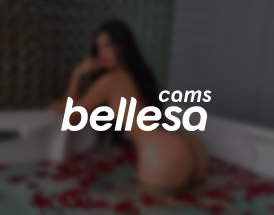What's the difference between bisexuality and pansexuality, anyway?

Kehlani came out as pansexual via Twitter a few days ago, shortly followed by Janelle Monae, who came out in a candid interview with Rolling Stone. These celebrities aren’t the first to claim a pansexual identity -- for example, Miley Cyrus came out as pansexual back in 2016 -- but they have certainly made waves; pansexual became Merriam-Webster’s top searched dictionary word immediately after. To me, this communicates how unfamiliar people are with pansexuality, and how amazing it is that celebrities are bringing it visibility.
While Amandla Stenberg identifies as bisexual, she admits that if more people were familiar with pansexuality, she would identify as that instead. And as I reflect on my own struggle to come out as bisexual, I wonder if I’d grown up understanding pansexuality, if I would have chosen that as an identifier. The more that I read about it, and the more that I date and get to know myself, the more accurate it feels.
In her interview with Rolling Stone, Janelle stated, “I read about pansexuality and was like, ‘Oh, these are things that I identify with too.' I'm open to learning more about who I am.”
Post is gone 😬
View this post on Instagram
So what exactly is pansexuality?
Pansexuality describes someone who is attracted to people of all genders, beyond the parameters of male and female. People who are pan want to expressly communicate that gender and gender expression does not factor into their sexuality, that they can be attracted to trans, gender non-binary, and cisgender identities. People also use the term fluid to refer to the fact that their attractions change over time or lean heavily towards one gender/identity.
On the other hand, while bisexuality is often used to refer to people who are attracted to both men and women, the term has evolved. Currently, bisexuality can also describe a person with both homosexual (same sex) and heterosexual (different sex) attractions, meaning bisexual people can be attracted to trans or gender non-binary identities.
Since beginning to identify as bisexual, I have dated men, women, non-binary and transgender individuals. While this has made pansexuality feel like a more precise label, like Janelle, it’s something I’m still figuring out. Like Amandla, I also consider how unfamiliar people are with the label. Bisexual remains a catch-all phrase that doesn’t require me to provide further explanation -- but celebrities who are proudly claiming pansexuality are paving the way for others to explore that label and feel confident using it.

Fortunately, we define our labels, rather than allowing them to define us; there’s no need to feel pressured to stick to one specific label or to label yourself at all. These are just words to describe experiences and feelings, not prescriptions for how we have to live our lives indefinitely. And there is no series of labels that can ever fully encompass who a person is.
Often, people attack bisexual people for claiming a label that somehow negates non-binary and transgender individuals. This is a manifestation of biphobia, considering how multipurpose the label ‘bisexual’ can be. And in the same way that biphobia positions bisexual people as inherently polyamorous or unfaithful, pansexual people are stigmatized in the same way. Multisexualities overall receive heat for being an in-between phase before someone settles into homosexuality or heterosexuality, which are perceived as more 'real' identities.

Additionally, pansexuality is uniquely stigmatized as a ‘trendy’ identity or even a fake identity. Recognizing it as an identity is important because it’s not a label people stick on to seem more unique or interesting, it’s a real term that reflects people’s real attractions or potential for attraction. In fact, while this may feel like completely new vocabulary, the concept of pansexuality and gender-fluidity existed in a number of indigenous religions. Pansexuality is a more popular label now because we are decolonizing our ideas about gender and sexuality, not because people want to feel special.
Ultimately, these labels represent only a small fragment of who a person is. One day, if we ever manage to extinguish compulsive or assumed heterosexuality, perhaps there won’t even be a need to ‘come out’ or self-identify at all.



